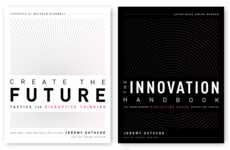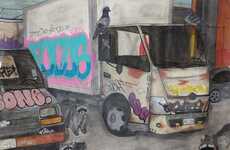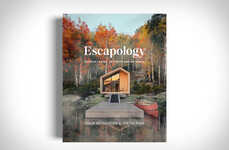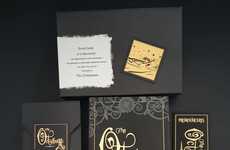
Tisah Tucknott — July 21, 2009 — Business
References: robertboswell
As the author of 11 books, it is clear that Robert Boswell is an avid writer. Not only does he write a lot, but he also is the recipient of several awards, including the John Gassner Prize, two National Endowment for the Arts Fellowships and the PEN West Award for Fiction among many others.
Robert Boswell’s latest book, “The Heyday of the Insensitive B@stards,” has been given a spot on Oprah’s Book Club, and is said to be an exceptional read.
10 Questions With Robert Boswell
1. How did you get involved in writing and what motivates you to continue?
When I was a boy in rural Kentucky, I had a good friend who lived up the county road who also wanted to be a writer. He and I would play cowboys or army or explorers, just like any of the other local yahoos, but we would play in chapters, narrating as we went. All of our characters were heroic, and almost all of our chapters ended with a cliffhanger. Which is to say, I always wanted to be a writer.
Of course, I had other desires—to play major league baseball, to take a rocket ship to the moon, to be a secret agent—but of all my childhood yearnings, the wish to be a writer was the most compelling and enduring. (Also, I couldn’t hit a curveball.) However, the possibility of actually becoming a writer seemed as remote as the likelihood of becoming Roberto Clemente or Neil Armstrong or James Bond.
Even now, twenty-some years after publishing my first stories, it surprises me to come across a stranger reading one of my books; it feels deliciously unreal, something like finding yourself alone in a foreign country and then bumping into an old acquaintance from home—what are the odds of that?
I’ve tried to keep true to that boy’s love of story, his deep immersion into the world created by books. Holding faith with that goofy kid has become the defining act of my life.
2. How significant are the topics of cool hunting and trend spotting in the world of writing?
They reveal the culture. A writer is often trying, by means of his engagement with his characters, to embody something of the larger culture and reveal the underlying tick-tock. Trends suggest where to look.
For example, a big segment of the population would way rather text than talk or write; given that the language of texting is compressed, symbolized, and rat-a-tat-tat, what does this trend suggest about the culture?
Maybe it suggests that we’re eager to substitute frequency for substance. We don’t expect people to drop everything to send a text, which is why you see people texting while watching a movie, eating a meal, or driving a car. This seems to imply that texting is more about checking in than trying to get at something true, real, or powerful. After all, the medium encourages limited and generic expression with shortcuts, emoticons, and screens the size of soupspoons.
Ultimately, text messages are so quick and clipped, it’s hard to hold the sender responsible for very much—but we do expect our text buddies to reply. Acknowledgment matters more than grace, wit, style, or humor. Texting is a legit form of communication, but when quantity is more important than quality, the writer is less answerable for what she texts than for how often.
Imagine William Shakespeare and former President Bush attempting to woo the same woman with their command of language. If the medium permits profound expression, methinks Willie has the edge. But if texting is the medium, Shakespeare’s complex verbiage makes him OTL.
Texting, we swim in complicated social waters without making any dives into the deep pools. Could a narrative investigation of the implications of this trend lead to a story? You betcha.
3. How do you define a trend in the kind of writing you do?
Every now and then, a writer’s vision intersects with the culture in a manner that makes readers—and other writers—open their eyes, and a literary trend is born. Raymond Carver’s short stories changed the literary landscape in the 1980s in precisely this way. Just before Carver, there were Maxine Hong Kingston and Donald Barthelme. Since Carver, there have been many smaller trends spawned by the work of a diverse group of writers, such as David Foster Wallace, Lorrie Moore, James Ellroy, and Andrea Barrett.
4. How do you define cool?
People that are of their times get easily digested by culture. People that are genuinely a step ahead of their times cannot be digested, and so they are masticated and regurgitated, becoming outcasts, outlaws, or victims. People who are a half-step ahead of their times are able to negotiate the distance between the present and the future. They’re cool.
5. Do you need a culture of innovation to write something that is cool?
No. Dull cultures may nonetheless create great writers, and repressive cultures often breed writers that find innovative ways to express their rage. For example, it’s hard to imagine a cooler book than Milan Kundera’s The Unbearable Lightness of Being or Bruno Schulz’s The Street of Crocodiles. The only problem with using cool to describe these books is the possible connotation that the works are merely fashionable. These are great works by serious writers. They’re also cool as hell.
6. What is the best way to write an infectious story?
Writers typically have to put themselves in jeopardy to write genuinely powerful stories. My stories are often described as risky because I write about sex, race, and the secret little perversities that pervade the culture; however, some of the biggest risks I’ve taken have simply entailed writing about subjects that are very close to me, things that matter to me profoundly.
“The Heyday of the Insensitive B@stards” opens with the story “No River Wide,” which I worked on for ten years, and which did not come together until I discovered that one of the characters had ALS (a degenerative muscular malady sometimes called Lou Gehrig’s disease). My younger brother was dying from ALS at the time, and I had to face not only the grief but the horror of the illness—as well as the unsettling, shameful possibility that his death would bring us all some relief. As I see it, “No River Wide” is the riskiest piece of fiction that I’ve ever written. Some reviewers have suggested that it’s the best story in the book.
I showed the story to my brother before he died. He told me he had some mixed feelings, but he thought it was a good story. He was a good man and a great brother.
7. What is the key to innovation?
My belief is that you have to have a real understanding of the tradition in which you’re working if you want to find ways to influence its direction. Einstein had to be deeply immersed in Newtonian physics before he could make the leap to relativity. Writers that merely read the latest thing tend to write derivative fiction that merely sounds like the real thing, much the way dozens of nineties grunge bands tried to sound like Nirvana. Some of them may have sold a few albums; few created worthwhile works of art.
Writers serious about innovation begin with the greats. If they’re writing short stories, they likely begin with writers like Anton Chekhov and Leo Tolstoy, Sherwood Anderson and Katherine Mansfield, Ernest Hemmingway and Katherine Anne Porter, Eudora Welty and Flannery O’Connor.
At present, the most innovative short story writer in the English language is Alice Munro. She is a revolutionary who is quietly reinventing narrative. She makes Trotsky look like an antique dealer.
8. What are the most important trends you see in writing industry?
There is no writing industry. Our smoke stacks and sweatshops are all imaginary. All we have are thousands of living humans sitting in separate little cubbies hunting-and-pecking out narratives, as well as the magical paginated tombs of deceased writers decking the halls of libraries and bookstores and the aforementioned cubbies. I’ve spotted only a few recent trends among these motley many.
First, they seem be drinking a better quality coffee than in years past, resulting in more highly caffeinated stories, the words so buzzed that they blur across the page.
Two, they seem to have given up the great American dream of selling out to the highest bidder, and so they toil fearlessly to write stories that are precisely theirs and not products they might imagine the market demands.
Three, they’re coming to understand that stories do not flourish by imitating film and television but by aggressively taking readers to imaginative places to which film and the tube have no access.
9. Professionally, what do you want to be doing or studying in 10 years?
Unless I lose my mind (or my fingers), I hope to be typing away, writing fiction. The idea is to continue exploring what it means to be human. That’s not likely a subject that will give out like a thirsty mule and dump me in that dreaded stretch of desert known as the writer’s block, a dreary landscape where most of your neighbors are unhappily and noisily drunk, where the voices of Toni Morrison and William Faulkner have been replaced by Dick Vitale and Digger Phelps, where the majestic and weird-ass demands of the heart are ignored in favor of the bitter recollections of sphincter.
In one of the stories in The Heyday of the Insensitive B@stards, a man’s life is set back on course by means of the insensate objects that populate his life—his car, a shag carpet, an easy chair. It is not a fantasy; rather, it is a story that investigates our relationship with familiar objects, and what lessons they have to teach us, what stories they have to tell, what wisdom they hold in their steely embrace.
Is this, you may be asking yourself, the work of a nutcase? Hmm. I’m not the one to answer that question, but I can say this: the world is full of objects, full of people interacting with those objects, and if changes in the quality of snowfall advise the deer when it’s time to go down from the mountains to the meadows, then why shouldn’t a car you’ve owned for a long time maybe breakdown right where you need to be found?
Okay, I made up that part about the deer. I’m a fiction writer; no can help it. My point is, I’ve got a laptop and half a brain, and I’m going to continue using both to create stories with the hope that now and again one will speak the truth in a manner that will permit others to authentically hear it.
10. What are your hobbies?
My wife and I bought into a ghost town high in the mountains of Colorado. It was a mining town that burned down in the 1930s, and there are only a few historic buildings remaining. We own many city blocks—only there is no city and the blocks are not divided by streets and look much more like meadows and hillsides than anything citylike. The old post office, dating back to 1870, is on our property, and my older brother and I have been working to turn it into a cabin. We have torn down interior walls, sistered in floor joists, and consumed a small ocean of beer.
Eventually, it will be a retreat, where one day I may write a story about a man who buys up a whole ghost town and all by himself (I’m writing my brother out of the story), he fixes up the post office, in which he then writes the great American novel or paints the great American painting or whittles the great American stick. I’ll call it “Why I Live at the P.O.” Other hobbies include bedwetting, gourmet sheet folding, and avoiding television.
Robert Boswell’s latest book, “The Heyday of the Insensitive B@stards,” has been given a spot on Oprah’s Book Club, and is said to be an exceptional read.
10 Questions With Robert Boswell
1. How did you get involved in writing and what motivates you to continue?
When I was a boy in rural Kentucky, I had a good friend who lived up the county road who also wanted to be a writer. He and I would play cowboys or army or explorers, just like any of the other local yahoos, but we would play in chapters, narrating as we went. All of our characters were heroic, and almost all of our chapters ended with a cliffhanger. Which is to say, I always wanted to be a writer.
Of course, I had other desires—to play major league baseball, to take a rocket ship to the moon, to be a secret agent—but of all my childhood yearnings, the wish to be a writer was the most compelling and enduring. (Also, I couldn’t hit a curveball.) However, the possibility of actually becoming a writer seemed as remote as the likelihood of becoming Roberto Clemente or Neil Armstrong or James Bond.
Even now, twenty-some years after publishing my first stories, it surprises me to come across a stranger reading one of my books; it feels deliciously unreal, something like finding yourself alone in a foreign country and then bumping into an old acquaintance from home—what are the odds of that?
I’ve tried to keep true to that boy’s love of story, his deep immersion into the world created by books. Holding faith with that goofy kid has become the defining act of my life.
2. How significant are the topics of cool hunting and trend spotting in the world of writing?
They reveal the culture. A writer is often trying, by means of his engagement with his characters, to embody something of the larger culture and reveal the underlying tick-tock. Trends suggest where to look.
For example, a big segment of the population would way rather text than talk or write; given that the language of texting is compressed, symbolized, and rat-a-tat-tat, what does this trend suggest about the culture?
Maybe it suggests that we’re eager to substitute frequency for substance. We don’t expect people to drop everything to send a text, which is why you see people texting while watching a movie, eating a meal, or driving a car. This seems to imply that texting is more about checking in than trying to get at something true, real, or powerful. After all, the medium encourages limited and generic expression with shortcuts, emoticons, and screens the size of soupspoons.
Ultimately, text messages are so quick and clipped, it’s hard to hold the sender responsible for very much—but we do expect our text buddies to reply. Acknowledgment matters more than grace, wit, style, or humor. Texting is a legit form of communication, but when quantity is more important than quality, the writer is less answerable for what she texts than for how often.
Imagine William Shakespeare and former President Bush attempting to woo the same woman with their command of language. If the medium permits profound expression, methinks Willie has the edge. But if texting is the medium, Shakespeare’s complex verbiage makes him OTL.
Texting, we swim in complicated social waters without making any dives into the deep pools. Could a narrative investigation of the implications of this trend lead to a story? You betcha.
3. How do you define a trend in the kind of writing you do?
Every now and then, a writer’s vision intersects with the culture in a manner that makes readers—and other writers—open their eyes, and a literary trend is born. Raymond Carver’s short stories changed the literary landscape in the 1980s in precisely this way. Just before Carver, there were Maxine Hong Kingston and Donald Barthelme. Since Carver, there have been many smaller trends spawned by the work of a diverse group of writers, such as David Foster Wallace, Lorrie Moore, James Ellroy, and Andrea Barrett.
4. How do you define cool?
People that are of their times get easily digested by culture. People that are genuinely a step ahead of their times cannot be digested, and so they are masticated and regurgitated, becoming outcasts, outlaws, or victims. People who are a half-step ahead of their times are able to negotiate the distance between the present and the future. They’re cool.
5. Do you need a culture of innovation to write something that is cool?
No. Dull cultures may nonetheless create great writers, and repressive cultures often breed writers that find innovative ways to express their rage. For example, it’s hard to imagine a cooler book than Milan Kundera’s The Unbearable Lightness of Being or Bruno Schulz’s The Street of Crocodiles. The only problem with using cool to describe these books is the possible connotation that the works are merely fashionable. These are great works by serious writers. They’re also cool as hell.
6. What is the best way to write an infectious story?
Writers typically have to put themselves in jeopardy to write genuinely powerful stories. My stories are often described as risky because I write about sex, race, and the secret little perversities that pervade the culture; however, some of the biggest risks I’ve taken have simply entailed writing about subjects that are very close to me, things that matter to me profoundly.
“The Heyday of the Insensitive B@stards” opens with the story “No River Wide,” which I worked on for ten years, and which did not come together until I discovered that one of the characters had ALS (a degenerative muscular malady sometimes called Lou Gehrig’s disease). My younger brother was dying from ALS at the time, and I had to face not only the grief but the horror of the illness—as well as the unsettling, shameful possibility that his death would bring us all some relief. As I see it, “No River Wide” is the riskiest piece of fiction that I’ve ever written. Some reviewers have suggested that it’s the best story in the book.
I showed the story to my brother before he died. He told me he had some mixed feelings, but he thought it was a good story. He was a good man and a great brother.
7. What is the key to innovation?
My belief is that you have to have a real understanding of the tradition in which you’re working if you want to find ways to influence its direction. Einstein had to be deeply immersed in Newtonian physics before he could make the leap to relativity. Writers that merely read the latest thing tend to write derivative fiction that merely sounds like the real thing, much the way dozens of nineties grunge bands tried to sound like Nirvana. Some of them may have sold a few albums; few created worthwhile works of art.
Writers serious about innovation begin with the greats. If they’re writing short stories, they likely begin with writers like Anton Chekhov and Leo Tolstoy, Sherwood Anderson and Katherine Mansfield, Ernest Hemmingway and Katherine Anne Porter, Eudora Welty and Flannery O’Connor.
At present, the most innovative short story writer in the English language is Alice Munro. She is a revolutionary who is quietly reinventing narrative. She makes Trotsky look like an antique dealer.
8. What are the most important trends you see in writing industry?
There is no writing industry. Our smoke stacks and sweatshops are all imaginary. All we have are thousands of living humans sitting in separate little cubbies hunting-and-pecking out narratives, as well as the magical paginated tombs of deceased writers decking the halls of libraries and bookstores and the aforementioned cubbies. I’ve spotted only a few recent trends among these motley many.
First, they seem be drinking a better quality coffee than in years past, resulting in more highly caffeinated stories, the words so buzzed that they blur across the page.
Two, they seem to have given up the great American dream of selling out to the highest bidder, and so they toil fearlessly to write stories that are precisely theirs and not products they might imagine the market demands.
Three, they’re coming to understand that stories do not flourish by imitating film and television but by aggressively taking readers to imaginative places to which film and the tube have no access.
9. Professionally, what do you want to be doing or studying in 10 years?
Unless I lose my mind (or my fingers), I hope to be typing away, writing fiction. The idea is to continue exploring what it means to be human. That’s not likely a subject that will give out like a thirsty mule and dump me in that dreaded stretch of desert known as the writer’s block, a dreary landscape where most of your neighbors are unhappily and noisily drunk, where the voices of Toni Morrison and William Faulkner have been replaced by Dick Vitale and Digger Phelps, where the majestic and weird-ass demands of the heart are ignored in favor of the bitter recollections of sphincter.
In one of the stories in The Heyday of the Insensitive B@stards, a man’s life is set back on course by means of the insensate objects that populate his life—his car, a shag carpet, an easy chair. It is not a fantasy; rather, it is a story that investigates our relationship with familiar objects, and what lessons they have to teach us, what stories they have to tell, what wisdom they hold in their steely embrace.
Is this, you may be asking yourself, the work of a nutcase? Hmm. I’m not the one to answer that question, but I can say this: the world is full of objects, full of people interacting with those objects, and if changes in the quality of snowfall advise the deer when it’s time to go down from the mountains to the meadows, then why shouldn’t a car you’ve owned for a long time maybe breakdown right where you need to be found?
Okay, I made up that part about the deer. I’m a fiction writer; no can help it. My point is, I’ve got a laptop and half a brain, and I’m going to continue using both to create stories with the hope that now and again one will speak the truth in a manner that will permit others to authentically hear it.
10. What are your hobbies?
My wife and I bought into a ghost town high in the mountains of Colorado. It was a mining town that burned down in the 1930s, and there are only a few historic buildings remaining. We own many city blocks—only there is no city and the blocks are not divided by streets and look much more like meadows and hillsides than anything citylike. The old post office, dating back to 1870, is on our property, and my older brother and I have been working to turn it into a cabin. We have torn down interior walls, sistered in floor joists, and consumed a small ocean of beer.
Eventually, it will be a retreat, where one day I may write a story about a man who buys up a whole ghost town and all by himself (I’m writing my brother out of the story), he fixes up the post office, in which he then writes the great American novel or paints the great American painting or whittles the great American stick. I’ll call it “Why I Live at the P.O.” Other hobbies include bedwetting, gourmet sheet folding, and avoiding television.
Trend Themes
1. Innovative Storytelling - Writers are finding new ways to take readers to imaginative places where TV and film have no access.
2. Personalization of Writing - Writers are now focusing fearlessly on writing stories that they truly identify with instead of becoming products of market demands.
3. Increasing Literary Consumption - The inclusion of ‘The Heyday of the Insensitive B@stards’ in Oprah's Book Club suggests that there is a growing interest in literary works among readers.
Industry Implications
1. Publishing - Publishing houses can provide platforms for writers to create new storytelling methods that go beyond traditional formats.
2. Marketing and Advertising - Advertisers can identify with the trend of personalization in writing to cater to the needs of customers who crave unique, personalized experiences.
3. Entertainment - TV and film production companies can work on creating new imaginative storytelling methods and exploring new themes and subjects that traditional media cannot.
3
Score
Popularity
Activity
Freshness























